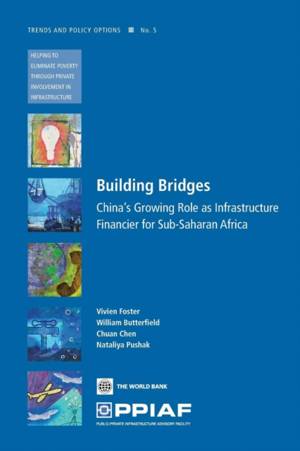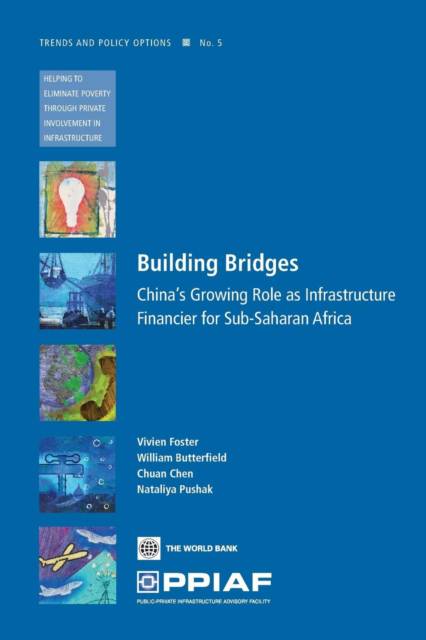
- Retrait gratuit dans votre magasin Club
- 7.000.000 titres dans notre catalogue
- Payer en toute sécurité
- Toujours un magasin près de chez vous
- Retrait gratuit dans votre magasin Club
- 7.000.0000 titres dans notre catalogue
- Payer en toute sécurité
- Toujours un magasin près de chez vous
Building Bridges
China's Growing Role as Infrastructure Financier for Sub-Saharan Africa Volume 5
Vivien Foster, William Butterfield, Chuan Chen, Nataliya Pushak
37,45 €
+ 74 points
Description
In recent years, a number of emerging economies has begun to play a growing role in the finance of infrastructure in Sub-Saharan Africa. Their combined resource flows are now comparable in scale to traditional Official Development Assistance from Organisation for Economic Co-operation and Development (OECD) countries or to capital from private investors. These non-OECD financiers include China, India, and the Gulf States, with China the largest player by far. Despite the importance of Chinese infrastructure finance in Africa, relatively little is known about the overall value and destination of financing. The authors of 'Building Bridges' quantify the magnitude of financial flows from China by collating public information from a wide range of Chinese language sources. From these data, they document the geographic distribution of resources, the types of infrastructure involved, the size and financing terms of the projects, and the methods through which finance is being provided. The growth of China and other non-OECD players as important financiers represents an encouraging trend for Africa, given the magnitude of its infrastructure deficit. The investments made by these nations are unprecedented both in scale and in their focus on large-scale infrastructure projects. With new actors and new approaches to financing, there is a learning process ahead for borrowers and financiers, both new and old. 'Building Bridges' summarizes the issues involved in this learning curve, including developing the national capacity to negotiate complex and innovative deals, and to enforce appropriate environmental and social standards for project development.
Spécifications
Parties prenantes
- Auteur(s) :
- Editeur:
Contenu
- Nombre de pages :
- 168
- Langue:
- Anglais
- Collection :
- Tome:
- n° 5
Caractéristiques
- EAN:
- 9780821375549
- Date de parution :
- 01-09-08
- Format:
- Livre broché
- Format numérique:
- Trade paperback (VS)
- Dimensions :
- 150 mm x 226 mm
- Poids :
- 294 g

Les avis
Nous publions uniquement les avis qui respectent les conditions requises. Consultez nos conditions pour les avis.






